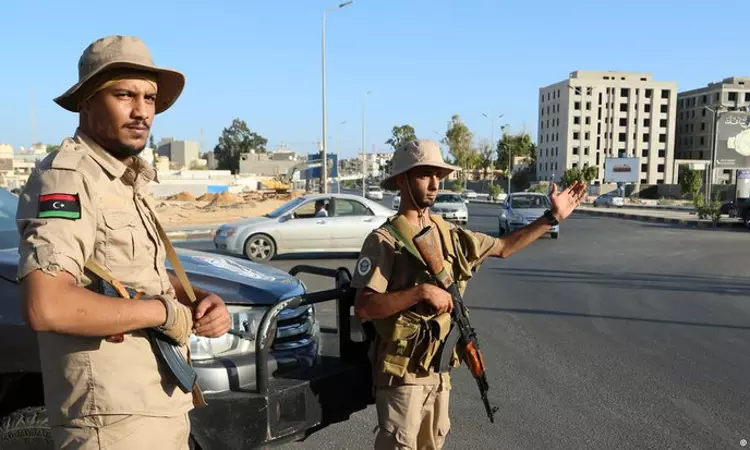Libyan crisis Power struggle: Who’s fighting in Tripoli?
The fighting has been described as some of the worst violence in the Libyan capital for months and saw civilians trapped in their homes after shooting broke out

In Libya this week, clashes between two rival militias left an estimated 27 people dead and over 100 more injured. The fighting has been described as some of the worst violence in the Libyan capital for months and saw civilians trapped in their homes after shooting broke out. It is unclear as yet whether those killed and injured were combatants or civilians.
The fighting, which started late on Monday and had mostly subsided by Tuesday morning, apparently began when one militia detained a senior leader from another. Mahmoud Hamza, a leader in what is known as the 444th brigade, was on his way out of town when another group known as the Special Deterrence Force detained him. Reports say the fighting ended when Hamza was released.
Although the situation in Libya has been comparatively calm over the last two years, long-time observers of the country’s turmoil continue to warn about the dangers posed by Libya’s militias. In fact, the incident this week is only the latest in a series of such clashes.
Libya’s militias are the distant relatives of informal fighting groups that arose after the country’s long-standing dictator Moammar Gadhafi was toppled from power during the country’s 2011 revolution. In the fighting that followed, locals banded together to protect their own communities and fight forces loyal to Gadhafi.
Since 2014, Libya has been split into two, with opposing governments located in the east and west of the country. A United Nations-backed administration known as the Government of National Unity is based in Tripoli in the west, and its rival, known as the House of Representatives, is based in the east, in Tobruk. Each is supported by a number of local militias and foreign powers, and each has tried to wrest control from the other. Attempts to hold an election that would unite the country have failed up until now.
During this time, Libya’s armed groups have evolved, proliferating, getting funding from the government and also gradually becoming part of Libya’s nascent state security institutions.
But the lack of a unified civilian government meant there was no real control over their growing number.
Libyan militias often fought others, competing for influence and wealth. They also openly harassed politicians, civilians and rights groups. As Roberta Maggi, a project officer at the Geneva Center for Security Sector Governance, wrote in a 2022 policy briefing, “Libya’s first parliament was regularly raided by militias that obstructed sessions and intimidated lawmakers, hoping to protect their [the militias’] benefits and extract further concessions.”
Political factions have also enlisted the militias to “bully their rivals and strengthen themselves,” Maggi adds.
In the east of Libya, former warlord-turned-politician Khalifa Haftar, has managed to consolidate control over various armed militias under his command. In the west, different militias have been competing and now there are fewer groups, albeit more powerful ones.
The two militias who were shooting at one another this week were the 444th brigade and the Special Deterrence Force. They are just two of many Libyan militias who have been vying for power in the country’s capital. As both are based in Tripoli, their conflict is more likely to have been about rivalry and influence, rather than the country’s political east-west divide.
This article was provided by Deutsche Welle



